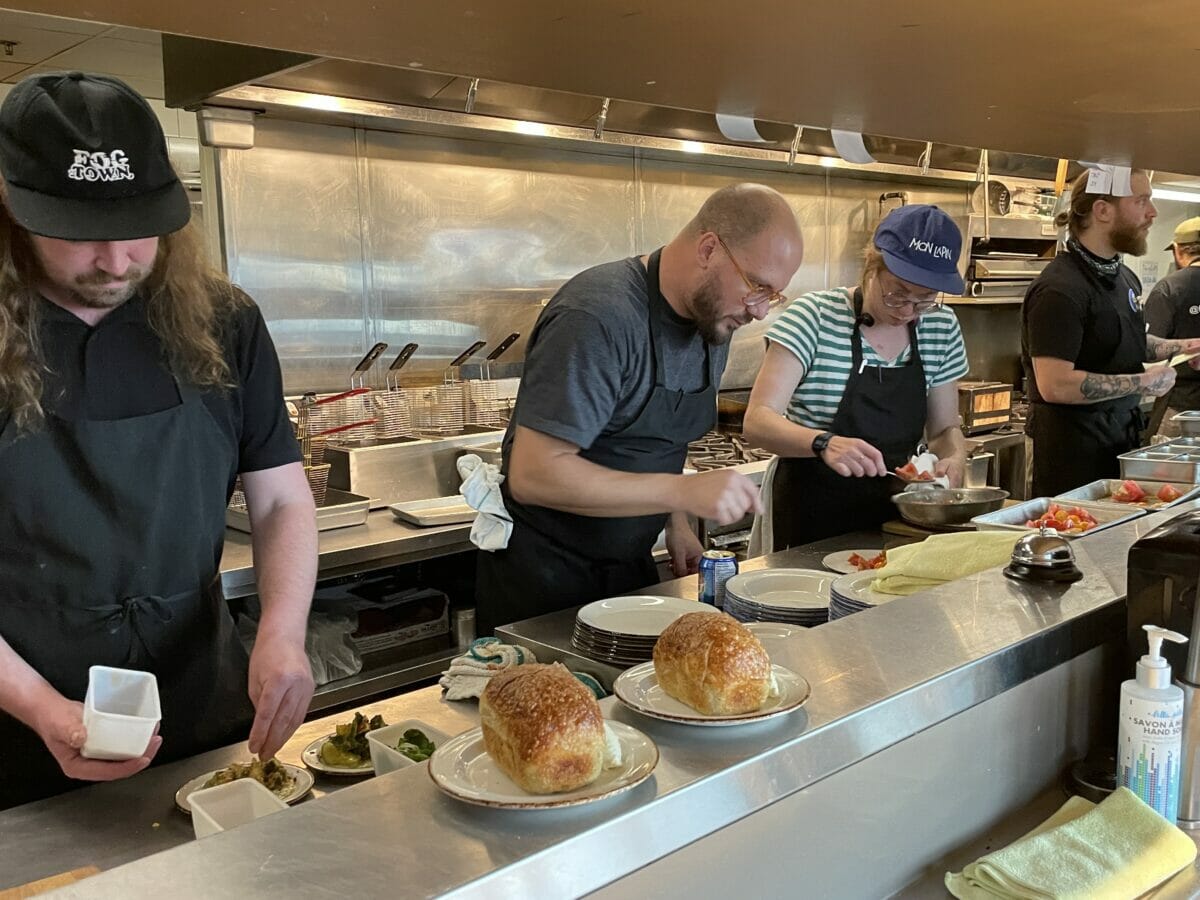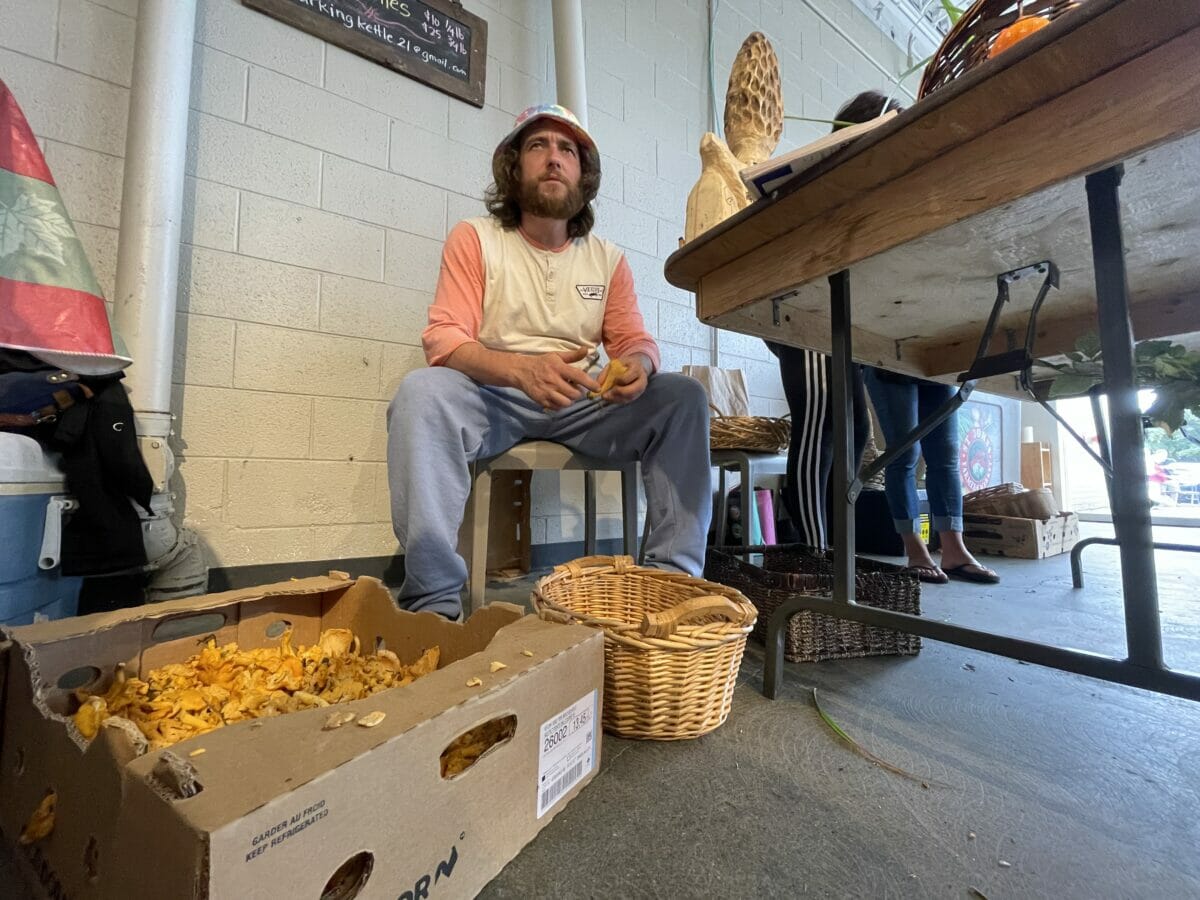In Newfoundland, where the ocean is at your doorstep, seasonal food goes far beyond what’s growing in the garden.

When I arrive for dinner at Terre, chef and owner Matthew Swift is apologetic. There are no scallops on the menu tonight. There’s been a lot of rain in Newfoundland lately, he explains, so his scallop harvester hasn’t been able to get out on the water.
It’s not an unusual situation for Swift, who writes a new menu nearly every day, in a style he refers to as “reactionary.” But the dramatic swings in what’s available—and when—are unlike anything he’s ever worked with before.
Swift and his wife moved to St. John’s, the capital of Newfoundland and Labrador, in 2017. Before that, the chef had served stints in Toronto and Montreal’s renowned Joe Beef, but after a single visit to the Atlantic province, he was sold. The couple moved east and opened up Terre, following a truly seasonal ethos—although he shies away from using terms such as farm to table, fearing there’s too much pretension associated there.
“In restaurants, you have a lot of claims being made—that things are watered with virgin’s tears from Mount Olympus and only harvested in the full moon. Really? Then how do you have enough of that to serve 50 people every night?” Swift says with a laugh. “I try not to make too many of those claims.”
Instead, Swift has quietly devoted himself to showcasing local food. Super local.
St. John’s is home to about 112,000 people, and the entire province of Newfoundland and Labrador has a population of just more than half a million people in an area that can be driven in a single day. In the small-ish city, relationships between chefs and suppliers are looser, more spontaneous and not just in the ingredients available. In Montreal, Swift relied on regular deliveries of meat and produce, trucks pulling up to the restaurant laden with food each week on a consistent schedule. In St. John’s, things are a little different. “I might have to drive to pick up [produce] myself or time the delivery for when their dad’s in town to see the doctor, so they have to come this way for an appointment. That’s my supply chain,” says Swift.
Working within a hyper-local supply system also means that Swift gets to connect with people outside of a traditional food system. For instance, he gets many of his mushrooms, berries, plums and other greens from forager Shawn Dawson, who says he’s thrilled with the revitalized interest in local food. “I was trying to sell stinging nettles and Japanese knotweed 10 years ago, and people thought it was literally insane,” says Dawson. But now, with the arrival of Swift and other like-minded local-first restaurateurs, diners are more likely to find the ingredients on menus.

Forager Shawn Dawson cleans chanterelle mushrooms at the St. John’s Farmers Market.
“People think of [foraging] as a famine pastime or even a nuisance. But there’s so much bounty all around us. Everyone’s backyard in Newfoundland has something to eat,” says Dawson. And that extends pretty far when your backyard butts up against the Atlantic ocean. Swift doesn’t only work with foragers in the forests and trails. He also sources from aquatic foragers, such as harvester Timothy Ball, who brings in lobster, crab, sea cucumbers, scallops, sea urchins and more.
A diver, Ball forages the sea by hand, methodically diving down and individually choosing edible treasures from the ocean floor. Just like Dawson has methods for foraging mushrooms—never take more than half of a patch at any time, never rip up from the base and destroy the roots—Ball is careful about what and how much he picks. He checks the size of each scallop, for instance, so he doesn’t grab any that are too young. He also harvests shellfish and seafood without dragging a net, which he says can destroy some of the ocean floor habitat.
“We’re picking up scallops and moving on and not upsetting rocks and kelp the way a drag would,” says Ball. Even with the slower pace, Ball says his catch rates are pretty close to what larger boats might bring in with nets. “You can end up with about 100 pounds of scallop from a drag. I can do between 50 and 60 pounds a day, depending on the depth, and in this operation, there’s two of us diving.”
Of course, relying on foraging and harvesting means there are uncontrollable limitations on what you can get—and when. Weather or a mechanical failure can cancel a trip. Plus, Ball can only go out diving a few days at a time. “My goal is to dive for about three or four days and take a break, because multiple dives over multiple days can play havoc with your system, and your body is the tool when you do this,” he says. By necessity, the give and take between chef and harvester has to be fluid and trustworthy. If Ball can’t deliver on a Thursday, he knows that will impact Swift’s Friday night bottom line.
Working within seasonal shifts means there will always be a fallow season, a dry season. “There are these moments in early March where the bigger question of food sovereignty and food security come up, because, in those moments, there’s absolutely nothing here,” says Swift.
In those moments, the fix isn’t going to be a quick tweak to the menu. Some chefs might throw in the towel and call up some traditional restaurant suppliers. For Swift, it’s an opportunity to stick to his guns and lean into the creativity inherent in what he does. He says that’s when his restaurant actually prompts a conversation with its guests. “We all love this idea of the ephemeral thing, the nicest scallop you’ve ever seen. We have several products that are the nicest ones you’ve ever seen. But there’s an ephemeral nature to it,” he says.
At the end of my dinner, Swift asks me to come back for a second night, just for a quick bite. The scallops are coming tomorrow and I simply have to try them.
Your articles are always so refreshing !!
Great Article, Will keep coming back!
Thanks for sharing!